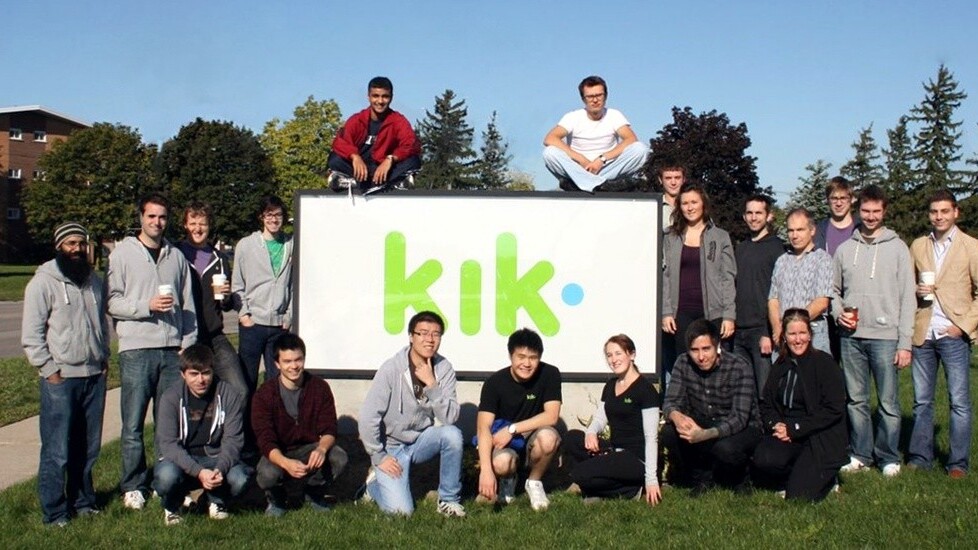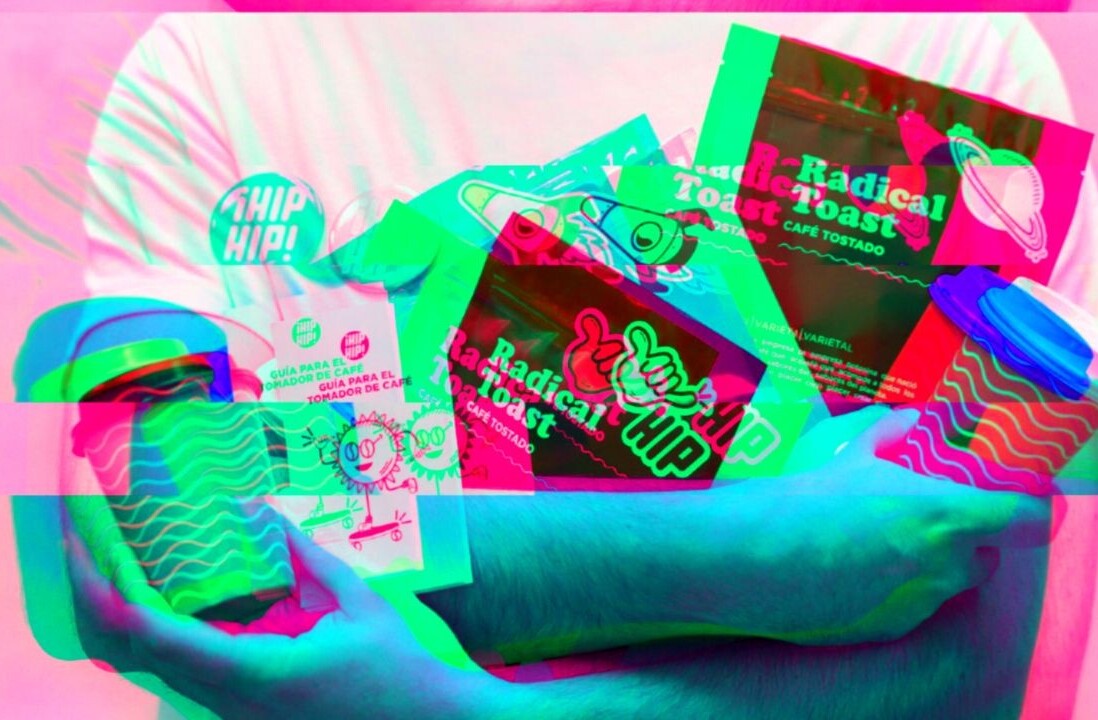
| This post is brought to you by Lenovo Inspire Me. More info can be found at LenovoInspireMe.com, where you can enter our competition to win the trip of a lifetime. | _ |
We’re taking a slightly different approach to our second feature in the Inspiring Entrepreneurs series. A fortnight ago, Boris interviewed Reed Hastings on his business lessons and experience, but now I’m shaking it up with a look at a 26-year-old founder who is disrupting the mobile and social networking spaces: Kik CEO and founder Ted Livingston.
Livingston’s journey as an entrepreneur is far shorter than Hastings and other more experienced business leaders, and yet he has toasted highs, experienced gut-wrenching lows and come out on the other side with a mobile messaging business that has over 80 million registered users.
You’ve heard us say it before: we’re growing like CRAZY! How crazy? With 225k new users each day, we’re now at 80 million users #KikSurvey
— Kik Interactive, Inc (@Kik) September 16, 2013
Kik, for those of you who don’t know of it, has its core user base in the US, and markets itself as a universal messaging service that doesn’t require a phone number for registration. Users on iOS, Android, Windows Phone and other platforms can swap text messages, photos and play games and view content for free over the service.
It began at RIM
Waterloo, Canada-based Kik recently passed 80 million users, which was given particular significance from local media who noted that it took the 4-and-a-half year old startup past BlackBerry and its BBM mobile messaging solution.
That not only signifies the missed opportunity that BlackBerry is desperately trying to make up for now — following its botched weekend launch of BBM for iOS and Android — but it sees Livingston’s own startup over take the company that gave him his start in the technology world.
“I went to university in Waterloo in 2005 for engineering. That’s only important because, as part of the engineering degree there, you have to complete six four-month internships over your course,” Livingston tells TNW in an interview.
“In my third co-op term I got a job at RIM (now BlackBerry), I started in May 2007, about a month before the iPhone initially came out. That was really cool because I got to see mobile very early, while also it was part of RIM’s policy to give everybody — including students — BlackBerrys with full data plans.

“So, at a time when data plans were ridiculously expensive and smartphones were ridiculously expensive — to the point that no consumer had them — here I was, having just turned twenty, with a smartphone and a full data plan.”
“I not only got to see mobile very early, but I got to live in a fully-penetrated mobile world very early,” he explains.
An all-round mobile education
At the time, RIM was the dominant smartphone company and Livingston settled into a “process-heavy” job within the company, where he worked tirelessly all hours.
“By day I did my job, but at night I wrote a piece of software to automate my job,” he recalls. “At the end of my four-month term, they brought me on part-time to run a team that built out a system around the software I’d developed at night.”
Livingston returned for his fourth and fifth intern spells with RIM, occupying a “really amazing” position within the consumer product management team. Enjoying the work and highly-regarded by the team, thing were going well.
“There were only 15 people on the team, and I was the youngest by about 10 years. This was at a time when consumer was completely dismissed by RIM — enterprise was the main focus — so I got to work with all of the individual product managers on all of their products. That was an amazing experience and opportunity… and an awesome company.”
‘The best piece of advice I ever got’
Livingston did that for a year. Two-thirds of the way through his degree at this point, he considered dropping out of university to become a product manager, before he got a dose of what proved to be sage advice which shaped his future.
“One of the luckiest moments in my life happened,” he says, as his then-boss pulled him aside and told the promising young intern to forget any plans of quitting his studies:
Ted, I know you love it here and are doing really well, but don’t drop out and come on full-time. You really understand mobile, you should leave and start your own company.
“That was the best piece of individual advice ever got in my life,” Livingston says.
He duly took it and vowed to start a company when his finished his third and final placement with RIM in December 2008.
Kik Music: iTunes for your BlackBerry
The idea for Kik Music, which was initially called Unsycned, came directly from his time at RIM.
“I looked at my BlackBerry and thought, ‘I love this device, but it’s so unfair that I also have to carry an iPod when my friends with iPhones just need to carry an iPhone. The music experience was so bad on BlackBerry, that I decided to build a service to fix it,” Livingston says.
He headed back to the campus digs to round up a founding team. Having tried to start companies with friends unsuccessfully in the past, he took a room at the new VeloCity dorm — a project that housed 70 entrepreneurial-minded students together — at the University of Waterloo.

After putting in $45,000 of his own money — a large chunk of which was an inheritance — Livingston rounded up an initial team, that included co-founder Chris Best, who is now Kik CTO, and got to work on the service.
Livingston and Best’s “killer music service for BlackBerry” aimed to put all of a user’s music on a phone, but also turn the device into portable music player which could plug into a PC to play music and playlists without needing to sync.
The duo planned to integrate with BBM to let users share tracks, and they opened discussions with music labels to gain the necessary rights.
“We were going to be the first music service in the world to let you share music legally with your friends,” says Livingston, pointing out that users would be permitted to share tracks with a limited number of plays available for friends.
Going cross-platform
Livingston graduated and the company continued on, developing a music player for BlackBerry while its legal team embarked on the long and complicated process of working with music labels. Indeed, the latter business proved to be particularly lengthy given the ground-breaking deal that lay in prospect.
In late 2009, seeing a growth in a new breed of cross-platform messaging services like Ping and WhatsApp — which quickly clocked one million users each — the Kik team realized that BBM alone wouldn’t be enough.
Livingston and his team spent a few months “begging” RIM to open its popular messaging service to other channels, but the company had no interest.

“They looked at BBM as a key reason that people bought BlackBerry phones, but, for us, BBM already existed for other platforms — it was called WhatsApp or Ping chat — it’s only a matter of time, we thought.”
In the end, Kik took it upon themselves to build a cross-platform messaging app because RIM wouldn’t budge.
“We told them we’d have to build our own cross-platform chat… and they said: ‘go ahead’,” Livingston recalls with a laugh.
Messaging begins to take center stage
Kik Music raised a $1 million seed funding round in January 2010, roughly a year after Livingston had first embarked on the project. Already, he had dropped out of his final year of studies to devote himself to the project 100%.
At that point, the company was focused on three things: building a cross-platform music player and a cross-platform chat service for sharing tracks, while working on licensing deals with record labels.
“While we were waiting for the music licensing to go through — it took some time because it was so unique — we decided to launch a beta of the messaging app,” Livingston says.
The Kik Chat app launched in April 2010 for iOS and BlackBerry initially. It performed reasonably with around 50,000 users, but the Kik team felt it could be a lot better.
By October 2010, the music product was essentially done and Kik Chat had continued to chug along — but the company was waiting on a closure to its dealings with the labels.
“The licensing had basically got to the point where we had the final longform agreement in principle,” Livingston says. “But we’d been working on a second version of the chat app, and figured we could get the second version out and then follow-up right after with the music product.”
So in October 2010, Kik launched the second version of its messaging app — and the company’s future changed almost instantly.
Pivot to chat
“We shut down Kik Chat, and the next day we launched Kik Messenger,” Livingston says.
Kik Chat had been a bit of a complicated service, offering both free SMS when a user’s phone was offline, and free Internet-based messages when they were online. The relaunched app dropped the SMS element, and focused entirely on Web-based messages using usernames not phone numbers.
It was a hit.
“It absolutely just exploded,” Livingston says. “We added our first million users in 15 days, and our second million users came seven days after that. Literally the whole world was talking about Kik, it was crazy.”
“My mum called me to tell me that she’d seen Whoopi Goldberg talking about Kik on TV, and things were going crazy,” he says. “Investors were flying in from across the world to meet us.”
Reflecting on how Kik Messenger hit the sweet spot, Livingston believes that the team produced the first cross-platform messenger that worked well on BlackBerry: “We loved our BlackBerries,” he says. Kik was also the first to sync up address books to suggest ‘people that you may know,’ and help move a user’s friends — a key point for messenger stickiness — onto the service too.
At the time, Kik had around ten staff and the immediate objective following the launch of Kik Messenger was to keep the service running and stable. A challenge that was difficult on even a daily basis.
“To go from zero to a million users, with ten people, with a real-time messaging service, was crazy,” he reflects.
The team practically lived in the office, worrying about server capacity, during that period, with Livingston regularly heading out to pick up McDonalds, coffee and other food and drinks to keep the troops stocked and focused.
“At this point it was pure survival,” Livingston says.
With all of the interest in the service, the Kik team quickly released that chat was where the buzz was at and that they “shouldn’t talk about music” with investors or others.
“We were in final longform agreements with Universal Music in both Canada and the US, and were not far behind with other labels, but, at that point, music became an unnecessary risk… we already had a hit service.”
“Before we launched, we thought chat was there only to serve music, we thought music would be the killer app. When we launched Kik Messenger we thought nothing would happen, we had no idea what we were in for.”
Yet, there was more to come.
From all-time high to all-time low
Having quickly acquired 2 million registered users and the attention of the tech industry, Livingston and Kik’s dream was left in tatters after RIM hit the young startup with a triple punch.
It pulled Kik from the BlackBerry App Store — meaning no more downloads.
It cut off the company’s access to push notifications — meaning BlackBerry users would go hours without seeing new messages from friends.
Two weeks later, it served papers for a lawsuit alleging that Kik had infringed on three of its patents — putting the company’s technology, and particularly Livingston time spent at RIM, into question.
“It was devastating. No new BlackBerry users could join, while one-third of our users were on BlackBerry — if you weren’t on BlackBerry, some of your friends certainly were — so it broke the experience for everyone,” he says.
“Our growth just plummeted to basically zero.”

Livingston said the suit came right out of the blue and was a big surprise since RIM had known that Kik was working on cross-platform messaging — which included BlackBerry — for nine months, while a number of people inside the company had used the first version.
RIM never claimed that Livingston had ‘stolen’ BlackBerry Messenger, but the suit contained a mention of his time at the company — complete with confidentiality agreements — which, when looked at separately, could have led some to make that incorrect assumption.
That something the Kik CEO found to be “personally devastating”.
All in all, RIM’s actions came less than four weeks after Kik Messenger launched.
The deal that saved Kik
“Everyone in the community thought we were done, and that it was over,” he recalls, but fortunately for the company it had just agreed a new round of funding, which contained a unique clause.
The company signed terms for its Series A with RRE Ventures the Friday night before RIM made its move.
“We actually wrote in the termsheet: RIM is going to sue us, and you’re ok with that. We signed it on Friday night at around 10pm… if we hadn’t signed that termsheet, Kik probably would’ve died.”
The deal itself was complicated by the moves from RIM.
RRE had agreed to take on half of the $10 million round, but the lawsuit and blows to the product scared away the investors who were down to complete the round.
It wasn’t until four months later when Spark Capital returned to the table, with Union Square Ventures, that a final deal was agreed. Both Spark and RRE agreed to split the round, but at the slightly lower figure of $8 million and with a lower valuation for Kik.
To compensate RRE for showing faith and investing early, Livingston agreed to give up some shares to better liquidate their investment. Rather than cashing out at a difficult time — something he told Pando Daily would be akin to grabbing a parachute while a plane is crash landing — Livingston opted to pledge the $1 million raised to his school: the University of Waterloo.
The then 23-year-old donated the money to set up a startup seed fund for the VeloCity program, where it all began for Kik. The proceeds were to be used to establish a startup competition, which would offer up $25,000 in prize money per term which two startups competed to win.
The Canadian government matched the investment, and the 15-year plan kicked off.
Far from a publicity stunt, the deal was a win-win for Kik’s investment and the startup scene in general. As for Livingston, he planned an overseas vacation to coincide with the announcement, such was his intention to avoid the limelight.
(Related note: Getting images of the elusive Livingston — who is quick to credit his team, and not himself for Kik’s successes — for this article proved challenging.)
Charitable donations aside, the company had hit its lowest point yet, just weeks after the euphoria of an unexpected hit.
How did Livingston, then only 23-years-old himself, cope with the pressure and focus his team?
“The story was two-fold. This has happened and it’s really, really shitty and unfair, but, how are we going to win without BlackBerry. Let’s do that, and let’s prove them and the community — to whom it looked like we’d taken BBM from RIM — all wrong,” he says.
Recovering and the platform vision
Kik went back to the drawing board knowing that the loss of BlackBerry put it at a huge disadvantage with its competitors.
“The problem that we tried to solve, is how do we differentiate our product when anything we can do our competitors can just copy, and put on BlackBerry, while users fundamentally want a very simple product.”
“We knew it had to be something big, something that, by the time they copied it and put it on BlackBerry, it really didn’t matter,” he says.
The answer that Kik landed on was to develop a platform.
“We thought that if we could build a compelling enough platform then, on one side, we could keep the experience very simple. While, on the other side, we could build something so amazing and awesome that they’d be all the features — like playing games, sharing photos and shopping — which would take our competitors a long time to copy.”
Related to that, such content-rich services would be difficult to implement on BlackBerry, so already there was some upside to being an iOS and Android-only service.
That the company came to this conclusion in 2011 is interesting since the mobile messaging industry, which was then comparatively far smaller than it is today, is now really testing those waters with gaming, video calling and other services sprouting up on messenger apps — initially those in Asia — over the past 6-12 months.
Yet, Kik saw the potential far sooner.
Success among youngsters and mobile apps
The company set its sights on the long-game of becoming a content platform but, in the short-term, it benefited from an unexpected success based on some features within its service.
Most other apps attached themselves to a user’s phone, for example requiring their number to register an account — but Kik had opted to base identity around usernames instead. Being the only one that did not require a number quickly became a key advantage.
“For the mass market, we couldn’t compete with these guys because phone numbers were simpler, but usernames became very popular for those that didn’t have phone numbers — such as kids surfing the Web on an iPod Touch or cheap Android. Based on that we came to control the entire messaging market for under-18s.”
“The second group that cared about usernames were/are those people looking to connect on apps like Instagram or every mobile app with some public component. As well as great brand — ‘What’s your Kik’, ‘Kik me’ — it’s the only mainstream messenger that doesn’t require you to post your phone number,” Livingston explains.
Since most users aren’t comfortable posting their phone numbers to the Internet — and any unwanted Kik contacts can be ignored or blocked — the service found a niche, and it’s one that Livingston says provided immense amounts of growth following the rut that the company fell into after being booted off of BlackBerry.
“It’s just been exponential growth,” he explains. “Especially with things like meeting new people — it’s very defensible. We only need to get five of your closest friends to switch to Kik, other apps would need to get all of Instagram or all of Tumblr.”
This chart from App Annie (which covers iOS-only) shows the growth that Kik began to achieve, and how it had previously dropped following its issues with RIM.
The native platform
Kik took its first step into the platform play when it launched an SDK for iOS developers in July 2011.
The SDK — which Kik said could be set up in as little as ten minutes — allowed developers to introduce share buttons that would direct users to Kik. The idea in principle was that they may want to discuss or interact (such a draw) with the shared item in more detail, and could do so using Kik Messenger.
“We liked the idea — and our users liked it too — but there were two problems with it. A number of items weren’t available cross-platform, which meant some apps worked for iOS only. Secondly, there was so much pain involved in downloading a game — it would take users some two minutes to download a game that their friends Kiked them.”
The Web-based platform
The project was far ahead of the rest of the industry, but it needed some work to fit with Kik’s internal philosophy of ‘simple but perfect’.
The company went back to the drawing board — this time in a greatly more positive situation than a year previous — and found inspiration away from mobile.
“We looked at the parts that we liked and didn’t like about the native platform, and took a step back to look at the desktop. Everything is cross-platform, because it’s all Web, and there was a light bulb moment where we asked: Why can’t the Web work on mobile.”
So, for the last two years, Kik has set about turning Kik into a mobile browser with a messenger at the center for distribution.
“Kik has simply become the browser done right for mobile,” Livingston says.
The company advanced its content platform play last November when it launched Cards, an HTML5-based system that brings content and features into the messaging experience without cluttering the basic offering.
After raising a $19.5 million Series B round, Kik launched its first game — roping in high-profile entertainment firm Zynga — and stickers this July, but the Cards platform is not yet available publicly for developers. Livingston says that there’s no immediate time frame for when that will happen, although it will occur in due course.
The company is differentiating itself from the competition — both domestically in North America and in Asia — with its HTML5 focus. Others are launching SDKs and APIs to link games and apps to messaging services, or working with third-party developers to use their messaging app — and user’s social graphs — as app distribution channels, but, for Kik and Livingston, the messaging experience remains core.
There’s been plenty of speculation over the future of WhatsApp, with Google and Facebook said to have considered offers in the past twelve months.
Given that backdrop, it seems quite likely that Kik — which had 50 million users just six months ago — has attracted suitors. Though he declines to comment directly on that possibility, Livingston makes it very clear that he believes messaging to be a focus that the Web’s biggest firms need to be a part of
“It’s quickly becoming clear to all the major companies in the world that messengers are the killer apps of the mobile era. Therefore, if you don’t own one of the big messaging apps, then you won’t be the center of this era of computing. That makes companies in that space extremely valuable,” he says.
Recruitment, Kik-style
As an aside, one of the most fascinating aspects of Kik is the company’s incredibly low rate of staff that it has, compared to its user base. It recently topped 80 million users, but has just 35 staff.
“It’s always been our philosophy to have as small a team as possible, but the best people possible. That is absolutely true of our team today,” Livingston says.
Not only is the company small, but the startup’s retention rate is near zero. Over the 4.5 years that the company has been going, just three engineers have resigned while only one was let go. Of the former trio, Livingston points out that two left to found their own companies while the other returned on a part-time capacity.
What’s the secret?
A unique hiring route that sees prospective new staffers initially come aboard on a part-time basis.
“Almost every single person who worked at Kik worked part-time before they came on full-time. For a job posting, you’d interview for the job, but then we don’t offer a full job, it’s part-time. We will pay you to work nights and weekends with us.”
“This way, you get a chance to see what it’s like working with us, and we get a chance to see what it’s like working with you. This process has given us an amazingly high quality team.”
That and Kik hires the majority of its staff from the local area, including many co-ops from Waterloo University, no less.
While the company still has plenty of development to do if it is to realize its ambition to become a fully-fledged content platform with numbers comparable to market leader WhatsApp (and its 300 million monthly active users), it certainly seems that what goes around comes back around for Ted Livingston.
| This post is brought to you by Lenovo Inspire Me. More info can be found at LenovoInspireMe.com, where you can enter our competition to win the trip of a lifetime. | _ |
Header image via Kik
Get the TNW newsletter
Get the most important tech news in your inbox each week.








